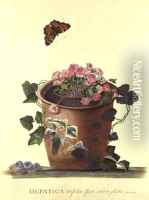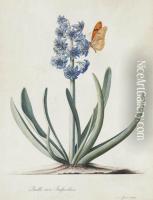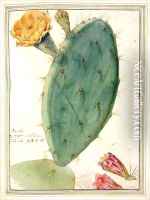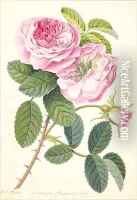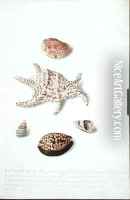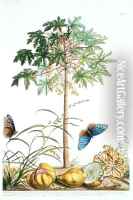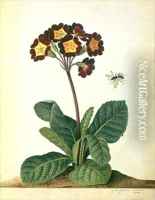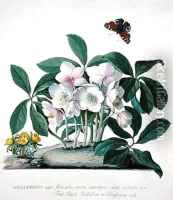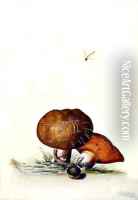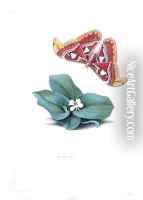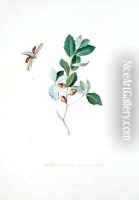Georg Dionysius Ehret Paintings
Georg Dionysius Ehret was a distinguished German botanical illustrator and entomologist known for his influential works in the field of botany and botanical art. Born on January 30, 1708, in Heidelberg, Germany, Ehret grew up in a family with a gardening background, which nurtured his interest in plants from an early age. He initially worked as a gardener's apprentice, which allowed him to develop a deep understanding of plants and their structures.
Ehret's talent for drawing was evident early on, and he began to create detailed illustrations of plants. His artistic skills caught the attention of several prominent figures in the botanical community, including Dr. Johann Wilhelm Weinmann, for whom he produced many illustrations. He moved to England in the 1730s, where his career as a botanical artist truly flourished. In England, Ehret became acquainted with leading botanists like Sir Hans Sloane and Dr. Richard Mead, who became his patrons.
His work was characterized by its remarkable accuracy and beauty, and he is often credited with elevating the standard of botanical illustration. Ehret collaborated with the botanist Carl Linnaeus and contributed to the development of the Linnaean system of plant classification by providing high-quality illustrations that were used to identify and categorize various species.
Ehret's contributions to botanical art were significant, and his illustrations were widely disseminated through his publication of 'Plantae Selectae' and 'Phytanthoza Iconographia.' These works featured hundreds of botanical illustrations and were essential references for botanists and horticulturists. Ehret's influence extended beyond his lifetime, as his illustrations continued to be used and admired for their scientific value and artistic merit.
Georg Dionysius Ehret passed away on September 9, 1770, in Chelsea, London. His legacy is preserved in the form of his exquisite illustrations, many of which are housed in prestigious institutions around the world, including the Royal Botanic Gardens, Kew, and the British Museum. Through his work, Ehret made a lasting impact on the fields of botany and botanical illustration, and he remains a celebrated figure in the history of science and art.
